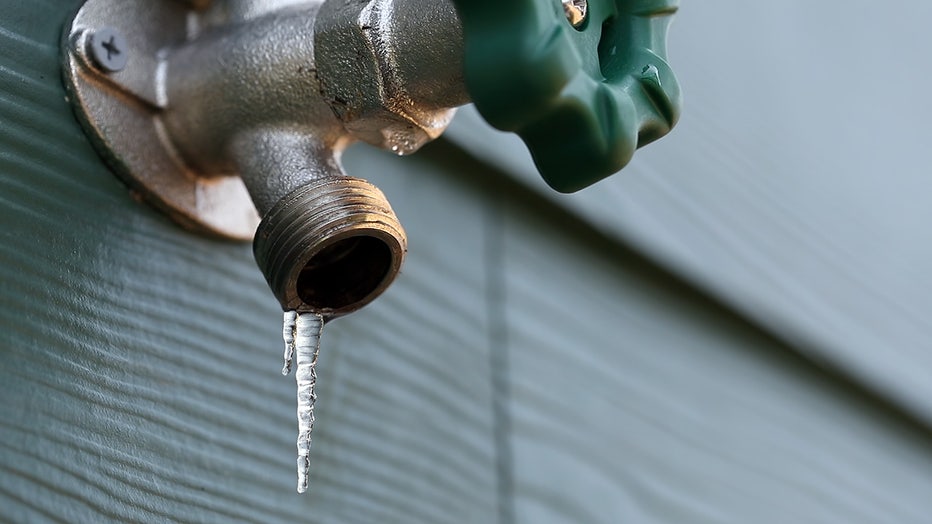How to prevent pipes from freezing in cold weather
When temperatures drop below freezing, homeowners need to take action in order to prevent pipes from freezing, which could lead to costly repairs if the pipes end up bursting.
Common causes of frozen pipes are a sudden drop in temperature, poor insulation or an incorrectly programmed thermostat.
According to the American Automobile Association (AAA), both plastic and copper pipes can burst, and even a one-eighth-inch crack in a pipe can spew as much as 250 gallons of water per day, causing flooding, significant structural damage and the potential for mold.
AAA lists seven ways you can prevent pipes from freezing when temperatures plunge in the heart of winter.

(File / jhorrocks / iStock / Getty Images Plus)
1. Insulate your pipes
Before temperatures drop, it's a good idea to wrap your pipes in insulation to protect them from the cold air. Pipes most prone to freezing are those in an attic or crawl space and ones that run along outside walls. Many attics and crawl spaces are not heated, which means temperatures in there can be significantly lower than in your living space.
2. Use caulk or insulation to seal air leaks around pipes
Any leaks around your pipes that allow cold air inside should be tightly sealed using caulk or insulation to keep the chill outside. AAA says you should also look for air leaks around electrical wiring and clothes dryer vents.
RELATED: Unfathomable cold from polar vortex: Mt. Washington, New Hampshire, hits -100 degrees wind chill
3. Disconnect garden hoses, sprinklers
If there's a shutoff valve, any water flow to outside sources such as hoses, sprinklers or outdoor faucets should be turned off. Garden hoses and sprinklers should also be disconnected and brought indoors. Any water from pipes leading to outdoor faucets should be drained in advance of the freezing temperatures to reduce the chances that pipes inside the house will freeze.
WHEN IS THE COLDEST TIME OF YEAR?
4. Allow water to drip from faucets
Consider setting your faucets to a slow drip if subfreezing temperatures are expected, especially any faucets near an outside wall. AAA says that even a slight trickle can prevent your pipes from freezing.
WINTERIZING CAN INCREASE YOUR HOME'S VALUE, PREVENT WEATHER-RELATED NIGHTMARES
5. Don't adjust the thermostat before bed
Many people lower the temperature on their thermostats before going to bed in order to save money on their heating bills. When there's the possibility of temperatures falling below freezing, you should maintain the same thermostat setting at night as you would during the day. Drops in temperature, which are more common overnight, could lead to frozen pipes in your home. Consumer Reports says your thermostat should never be set lower than 55 degrees.
FEELING THE HEAT: HOME ENERGY COSTS SPIKE WELL BEYOND PREDICTED JUMPS THIS WINTER
6. Open cabinet doors
When cabinet doors are closed, heat is unable to reach uninsulated pipes beneath sinks, exposing them to the colder temperatures. By opening the cabinets, you allow heat to reach those pipes and reduce their risk of freezing.
THESE ARE THE ALL-TIME COLDEST TEMPERATURES EVER RECORDED IN EACH STATE
7. Know where the water shutoff valve is located and how it works
In the event that your pipes do become frozen, AAA says you'll want to turn off the main water shutoff valve in the house. Doing this important step will reduce the damage caused by a burst pipe because there would not be water to feed the leak. You might be able to thaw a frozen pipe using a hairdryer: Begin by heating the section of pipe closest to the faucet, then work your way out toward the coldest part of the pipe. If a water pipe has already burst, make sure the water is turned off at the main shutoff valve, leave the water faucets turned on, then call a plumber for help.

